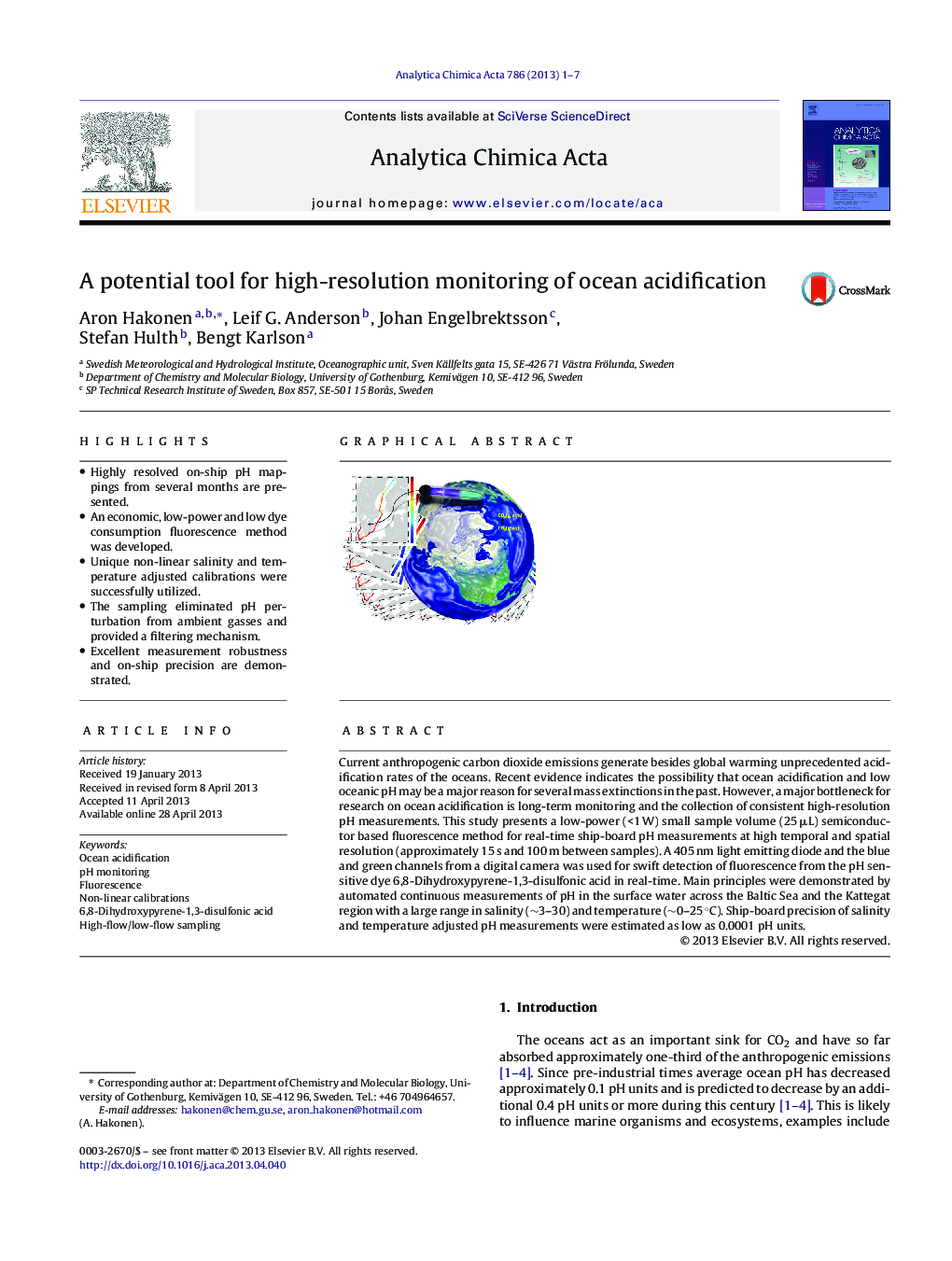| Article ID | Journal | Published Year | Pages | File Type |
|---|---|---|---|---|
| 1164680 | Analytica Chimica Acta | 2013 | 7 Pages |
•Highly resolved on-ship pH mappings from several months are presented.•An economic, low-power and low dye consumption fluorescence method was developed.•Unique non-linear salinity and temperature adjusted calibrations were successfully utilized.•The sampling eliminated pH perturbation from ambient gasses and provided a filtering mechanism.•Excellent measurement robustness and on-ship precision are demonstrated.
Current anthropogenic carbon dioxide emissions generate besides global warming unprecedented acidification rates of the oceans. Recent evidence indicates the possibility that ocean acidification and low oceanic pH may be a major reason for several mass extinctions in the past. However, a major bottleneck for research on ocean acidification is long-term monitoring and the collection of consistent high-resolution pH measurements. This study presents a low-power (<1 W) small sample volume (25 μL) semiconductor based fluorescence method for real-time ship-board pH measurements at high temporal and spatial resolution (approximately 15 s and 100 m between samples). A 405 nm light emitting diode and the blue and green channels from a digital camera was used for swift detection of fluorescence from the pH sensitive dye 6,8-Dihydroxypyrene-1,3-disulfonic acid in real-time. Main principles were demonstrated by automated continuous measurements of pH in the surface water across the Baltic Sea and the Kattegat region with a large range in salinity (∼3–30) and temperature (∼0–25 °C). Ship-board precision of salinity and temperature adjusted pH measurements were estimated as low as 0.0001 pH units.
Graphical abstractFigure optionsDownload full-size imageDownload as PowerPoint slide
